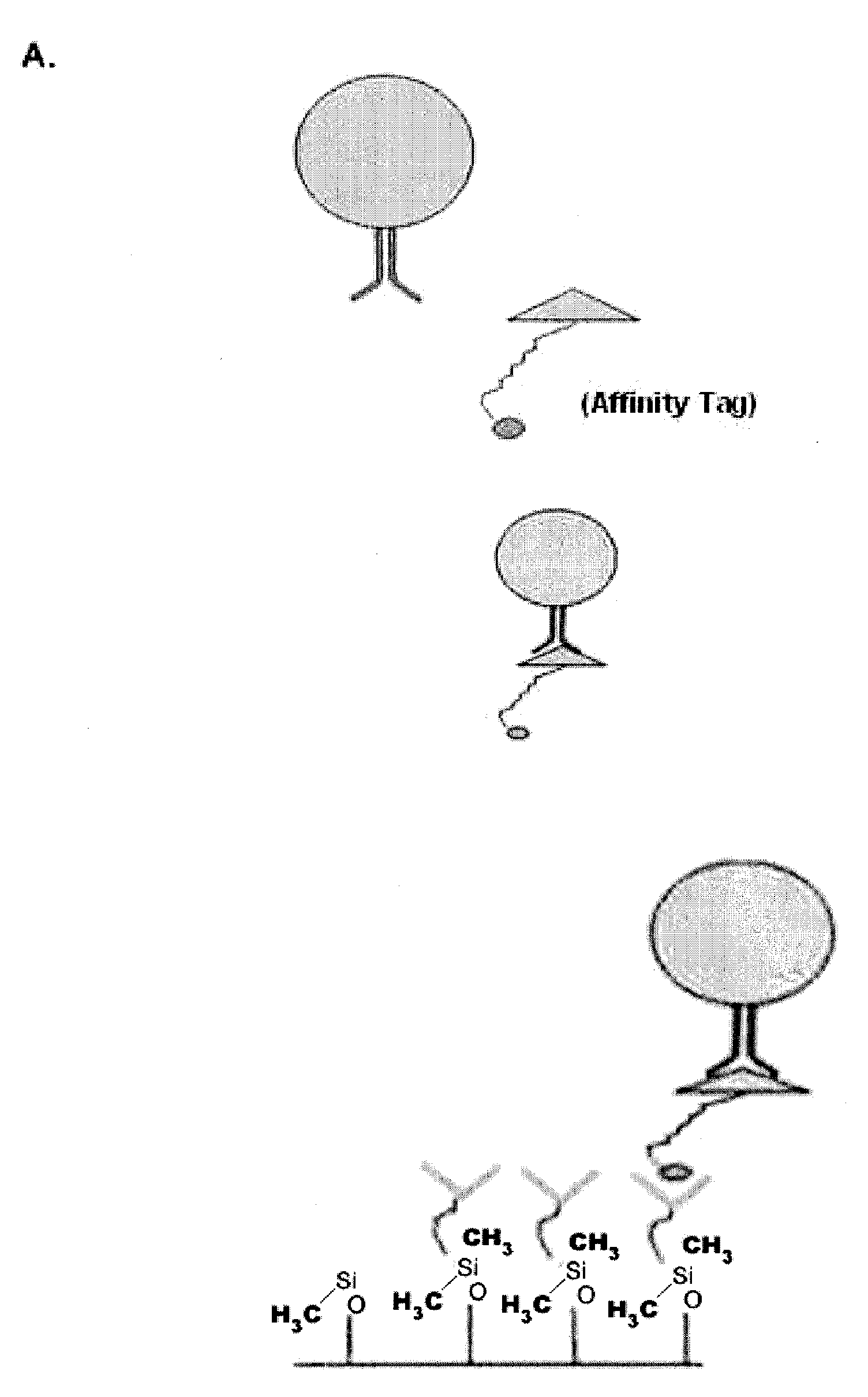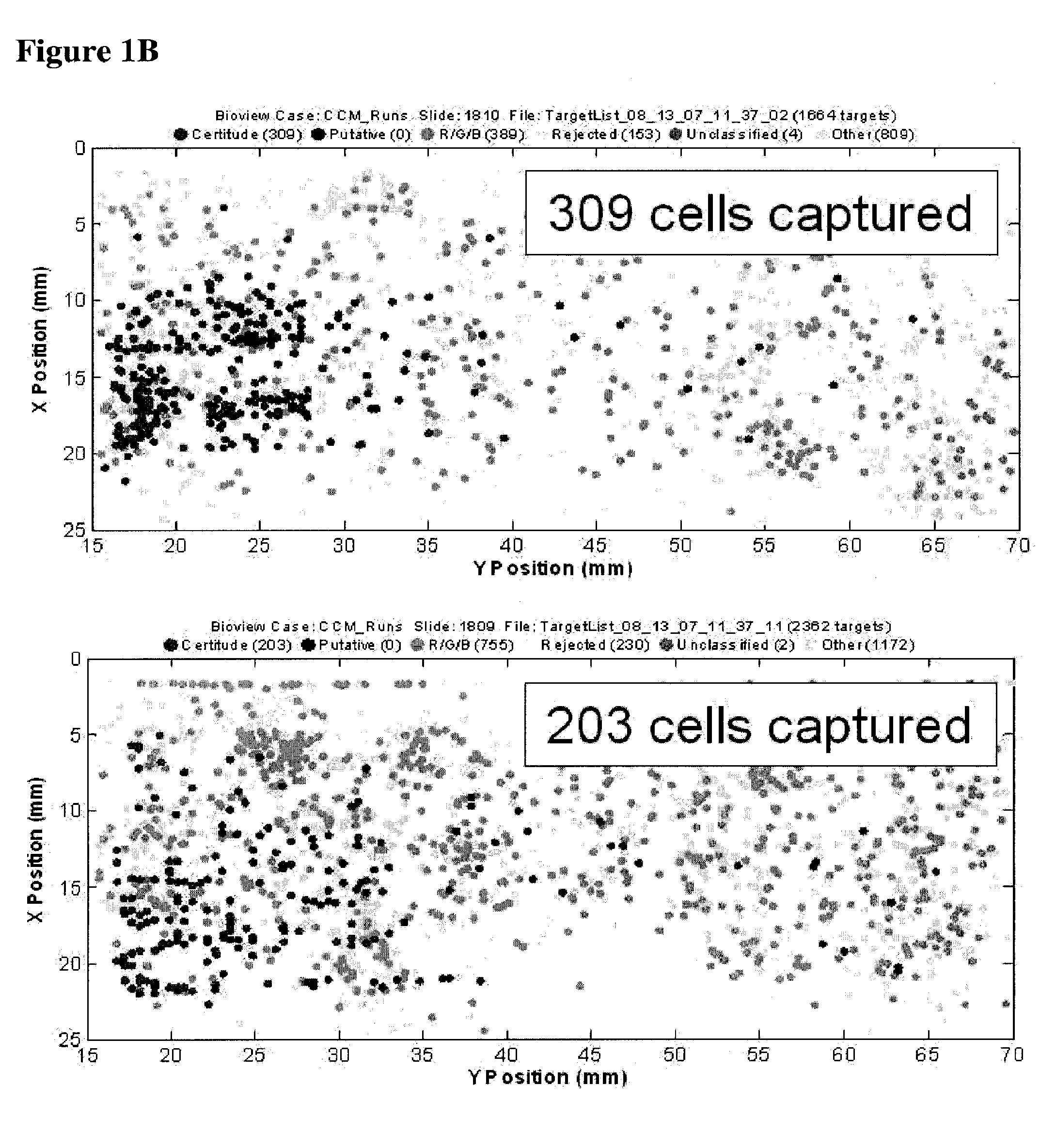Tagged Ligands For Enrichment of Rare Analytes From A Mixed Sample
a technology of rare analytes and tagged ligands, which is applied in the direction of positive displacement liquid engines, instruments, laboratory glasswares, etc., can solve the problems of difficult analysis of complex mixtures such as blood, requiring expensive and difficult maintenance machinery, and the added disadvantage of limited portability of facs technology
- Summary
- Abstract
- Description
- Claims
- Application Information
AI Technical Summary
Benefits of technology
Problems solved by technology
Method used
Image
Examples
example 1
Capture of H1650 Lung Cancer Cells with Biotinylated Anti-EpCam Antibody
[0062]The example depicted in FIG. 1 illustrates a method and device for isolating cancer cells. The affinity-tagged ligand (ATL) in this example comprised biotin as the affinity tag. The ligand was anti-Epithelial Cell Adhesion Molecule (EpCam) antibody which recognizes an epithelial cellular marker. For the experiment, H1650 lung cancer cells were incubated with biotinylated goat anti-EpCam antibody for 1 hour on ice (FIG. 1B). Approximately 1000 cells were input into each experiment. The left and right images represent replicate experiments. As a negative control, H1650 lung cancer cells were incubated with biotinylated goat IgG antibody under the same or similar conditions (FIG. 1A). Following the incubation, the cells were washed and run through an array of obstacles [comprising a restricted gap—Chip 7, please confirm] chip coated with Neutravidin™. Cells were then fixed and visualized by fluorescence micro...
example 2
[0064]Capture of cells after solution phase binding of the cells with an affinity-tagged ligand
[0065]The examples depicted in FIG. 2 illustrate the capture of cells labeled with an affinity tag before being subjected to a microfluidic device. FIG. 2A is a diagram depicting a cell being contacted with an affinity-tagged ligand in solution (top panel) and the capture of such cell with a microfluidic device coated with a capture moiety capable of recognizing the affinity-tag (lower panel).
[0066]FIG. 2B illustrates the capture of cells bound to EGF peptide tagged with biotin. In this example, MDA-MB-231 cells (a breast cell line which expresses low levels of EpCam) were contacted with biotin-tagged EGF peptide in solution under conditions favorable for binding. The cells were then subjected to a chip coated with neutravidin, a capture moiety capable of recognizing the affinity tag. Following fixation, the captured cells were visualized by fluorescent microscopy. The results demonstrate ...
PUM
 Login to View More
Login to View More Abstract
Description
Claims
Application Information
 Login to View More
Login to View More - R&D
- Intellectual Property
- Life Sciences
- Materials
- Tech Scout
- Unparalleled Data Quality
- Higher Quality Content
- 60% Fewer Hallucinations
Browse by: Latest US Patents, China's latest patents, Technical Efficacy Thesaurus, Application Domain, Technology Topic, Popular Technical Reports.
© 2025 PatSnap. All rights reserved.Legal|Privacy policy|Modern Slavery Act Transparency Statement|Sitemap|About US| Contact US: help@patsnap.com



